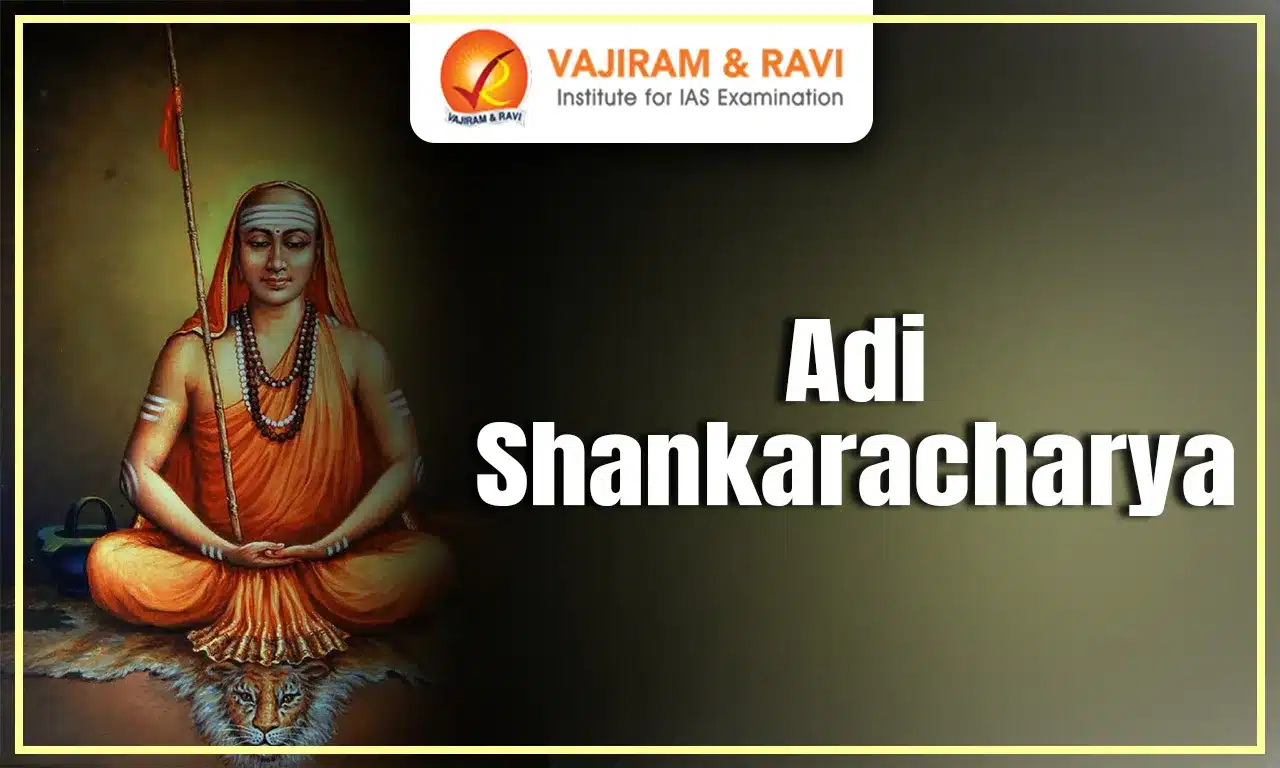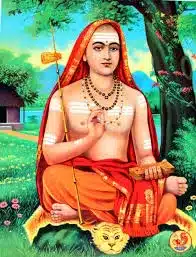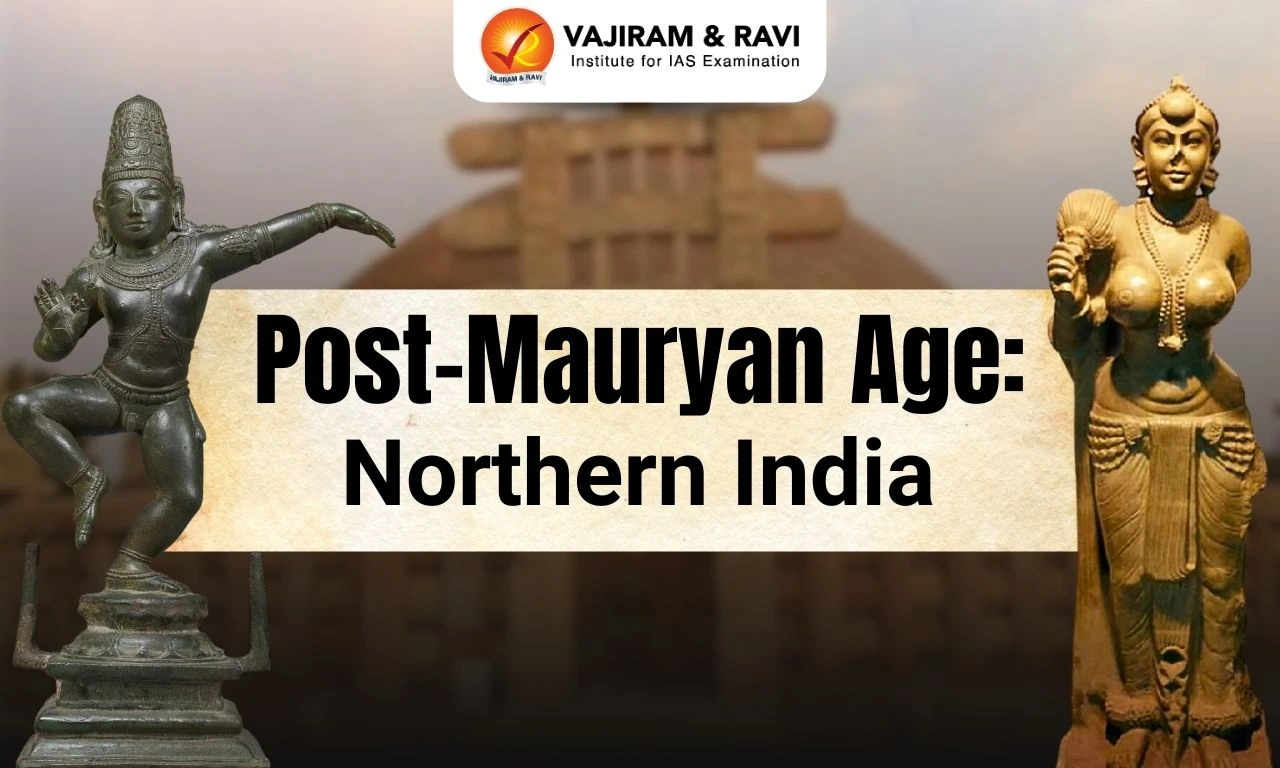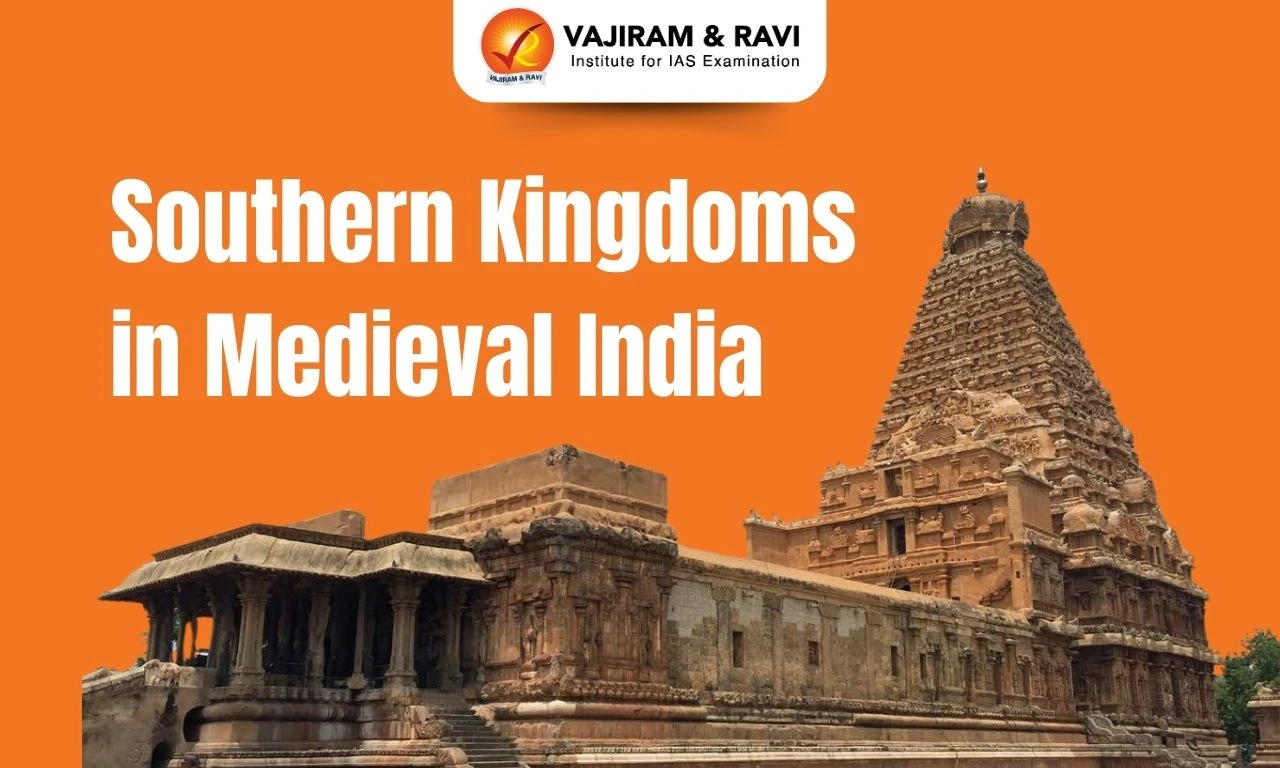Adi Shankaracharya, born in 788 A.D. in Kerala, unified various Hindu sampradayas through Panchayatan Pooja, promoting the worship of Shiva, Vishnu, Shakti, Ganapati, and Surya together. He was the foremost proponent of Advaita Vedanta, a philosophy that teaches the non-dualism of Atman (soul) and Brahman (universal reality). He established four primary Maths, Jyotirmath, Shringeri Math, Govardhan Math, and Dwarka Sharada Math, to spread Advaita Vedanta's teachings of non-dualism between Atman and Brahman.
A prolific scholar, Shankaracharya authored works like Vivekachudamani and AtmaBodha. His teachings remain relevant today, and his legacy is honoured with the 108-foot ‘Statue of Oneness’ in Omkareshwar, Madhya Pradesh, symbolizing unity and spiritual fulfilment.
About Adi Shankaracharya
Adi Shankaracharya was born in 788 A.D. in Kalady, Kerala, to the couple Shivaguru and Aryamba. He was a prominent Indian philosopher and theologian, often referred to as Sankara (Jagatguru). Under the teachings of his guru, Govinda Bhagavatpada, he studied the Vedas, Upanishads, Gaudapadiya Karika, and Brahmasutra with diligence. By spreading the ideas of Advaita Vedanta and Dashanami Sampradaya, Shankara gained the title of Shankaracharya among his disciples.
Adi Shankaracharya’s Philosophy
Adi Shankaracharya's Advaita Vedanta philosophy centres on the concept of non-dualism, stating that the individual self (Atman) and the ultimate reality (Brahman) are intrinsically unified as one. He asserts that the perceived dualities in the world are an illusion (Maya), and true liberation comes through realizing this oneness.
- Brahman And Atman (Non-Dualism): Shankaracharya’s philosophy, known as ‘Advaita Vedanta,’ espouses non-dualism. This philosophy highlights the principle of non-dualism, asserting that the individual soul (Atman) is identical to the supreme reality (Brahman).
- Brahman alone is real, the world is illusory, and the individual and universal soul are one. The dualities and differences in the world are an illusion.
- Maya (Illusion): The concept of Maya explains the illusion that causes individuals to see dualities and distinctions in the world. Maya is responsible for the misperception that Brahman is separate from the universe, and it creates the appearance of diversity.
- Brahman is beyond the scope of language and sensory comprehension, often described as 'Neti, Neti' (not this, not that), meaning that it transcends all descriptions and definitions.
- Karya and Karana (Effect and Cause): Advaita Vedanta's concept of Karya (effect)-Karana (cause) ananyatva highlights the non-duality of cause and effect, underscoring that all effects are essentially manifestations of their underlying cause, which is Brahman.
- Brahman, the ultimate cause, transcends all effects and remains the only eternal, unchanging reality, while the world and all dualities are mere appearances created by Maya.
- Liberation Through Knowledge: Advaita philosophy states that there are six different ways of learning:
- Pratyaksha: the knowledge gained by the senses
- Anumana: the knowledge gained by inference
- Upamana: the knowledge gained by analogy
- Sabda or agama: the knowledge gained by testimony
- Arthapatti: the knowledge gained by combining what we already know with new information that seems to contradict it, leading to a logical conclusion.
- Anupalabdhi: the knowledge gained by negation
Adi Shankaracharya Disciples
Shankara, later revered as Shankaracharya by his followers, had many disciples, but four of them Padmapada, Totakacharya, Hasta Malaka, and Sureshvara rose to prominence.
- Padmapada: Originally named Sanandana, became a disciple of Adi Shankaracharya. He earned the name ‘Padmapada,’ meaning ‘the one with lotus feet,’ after crossing the Ganges supported by lotuses. He founded Thekke Matham in Thrissur, Kerala.
- Totakacharya: Originally named Giri, was known for his devotion despite being seen as slow by others. Shankaracharya bestowed knowledge upon him, and he composed the poem ‘Totakashtakam.’ Totakacharya founded Vadakke Modam in Thrissur.
- Hasta Malaka: Initially thought to be a lunatic, he amazed Shankaracharya with his grasp of Advaita philosophy and became his disciple. He founded Idayil Matham in Thrissur.
- Sureshvara: Born as Mandana Misra, was a proponent of Karma Mimamsa before losing a philosophical debate to Shankaracharya and becoming his disciple. He founded Naduvil Matham in Thrissur.
Adi Shankaracharya Contributions
Adi Shankaracharya unified various Vedic traditions through Panchayatan Pooja, promoting the worship of multiple deities together. He also authored key philosophical works like Vivekachudamani and Atma Bodha, leaving a lasting impact on Hinduism.
- Unification of various sampradayas (schools of worship): During the time of Acharya Shankar, Vedic Hindu Dharma was divided into different sampradayas.
- There was significant conflict and disrespect among the Shaivas (devotees of Shiva), Vaishnavas (devotees of Vishnu), Shaktas (devotees of Shakti), Ganapatyas (devotees of Ganapati), and Sauryas (devotees of Surya, the Sun).
- To bring harmony among these groups, Acharya Shankar introduced the Panchayatan Puja, which involves the worship of all five deities together.
- Creator of various Stotras: Acharya Shankar was an exceptional literary figure. His contributions include notable works such as Vivekachudamani, Atma Bodha, Aparokshanubhuti, Ananda Lahari, Atma-Anatma Viveka, Drig-Drishya Viveka, Upadesa Sahasri, and many others.
Adi Shankaracharya’s Four Maths
Adi Shankaracharya established four key monasteries (maths) across India to promote Advaita Vedanta. These maths, which include religious shrines, temples, libraries, and residences, serve as important spiritual and knowledge centres. The four maths are: Jyotirmath in Uttarakhand, Shringeri Sharada Math in Karnataka, Govardhan Math in Odisha, and Dwarka Sharada Math in Gujarat. These institutions continue to preserve and spread his teachings.
- Jyotirmath: Located in Joshimath, Uttarakhand, within the Chamoli District, Jyotirmath is associated with the Atharvaveda. Shri Totakacharya was the first Shankaracharya of this peeth.
- Shringeri Sharada Math: Located in Karnataka’s Chikkamagalur district on the banks of the River Tunga, is the southern math linked to the Yajurveda. Shri Sureshvaracharya was the first Shankaracharya of this peeth.
- Vijayanagara kingdom was the first to patronise the Sringeri math in the 14th century CE.
- Govardhan Math: Located in Puri, Odisha, Govardhan Math represents the eastern peeth with authority over the Rigveda. Shri Padmapadacharya was its first Shankaracharya.
- Dwarka Sharada Math: Also known as the Kalika Math, the Dwarka Sharada Peeth is the western peeth located in Dwarka, Gujarat. It is associated with the Samaveda, and Shri Hastamalakacharya was the first Shankaracharya. The Mahavakya of this math is "Tattvamasi" (Thou art that).
Adi Shankaracharya Relevance Today
Adi Shankaracharya’s teachings hold profound relevance today, as people increasingly face challenges of materialism, identity crises, and existential questions. His emphasis on self-inquiry, detachment, and the realization of oneness offers a path to spiritual fulfilment and inner peace. In an era of division and chaos, Shankaracharya’s vision of unity—both within the self and the universe—provides a beacon of hope and wisdom, reminding the world that beneath all differences lies a singular, eternal truth: the oneness of existence.
- Statue of Oneness: The 'Statue of Oneness' (‘Ekatmata Ki Pratima’ ) depicts Adi Shankaracharya as a 12-year-old child, the age he was when he is said to have visited Omkareshwar. It was erected at Omkareshwar, in Khandwa district, Madhya Pradesh.
| Other Related Posts | |
| Adi Shankaracharya | Bhakti Movements in North India |
| Ramanujacharya | Bhakti Movements in South India |
| Vallabhacharya | Guru Nanak |
| Lingayats and Veerashaivas | Basavanna |
Last updated on December, 2025
→ Check out the latest UPSC Syllabus 2026 here.
→ Join Vajiram & Ravi’s Interview Guidance Programme for expert help to crack your final UPSC stage.
→ UPSC Mains Result 2025 is now out.
→ UPSC Notification 2026 is scheduled to be released on January 14, 2026.
→ UPSC Calendar 2026 is released on 15th May, 2025.
→ The UPSC Vacancy 2025 were released 1129, out of which 979 were for UPSC CSE and remaining 150 are for UPSC IFoS.
→ UPSC Prelims 2026 will be conducted on 24th May, 2026 & UPSC Mains 2026 will be conducted on 21st August 2026.
→ The UPSC Selection Process is of 3 stages-Prelims, Mains and Interview.
→ UPSC Result 2024 is released with latest UPSC Marksheet 2024. Check Now!
→ UPSC Prelims Result 2025 is out now for the CSE held on 25 May 2025.
→ UPSC Toppers List 2024 is released now. Shakti Dubey is UPSC AIR 1 2024 Topper.
→ UPSC Prelims Question Paper 2025 and Unofficial Prelims Answer Key 2025 are available now.
→ UPSC Mains Question Paper 2025 is out for Essay, GS 1, 2, 3 & GS 4.
→ UPSC Mains Indian Language Question Paper 2025 is now out.
→ UPSC Mains Optional Question Paper 2025 is now out.
→ Also check Best IAS Coaching in Delhi
Adi Shankaracharya FAQs
Q1. What is Adi Shankaracharya famous for?+
Q2. What are the 4 maths of Adi Shankaracharya?+
Q3. Who taught Shankaracharya?+
Q4. Who are the 4 disciples of Adi Shankaracharya?+
Q5. How old was Jagadguru Adi Shankaracharya when he passed away?+


















